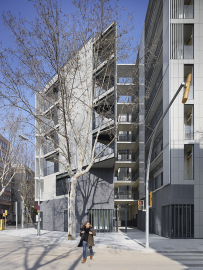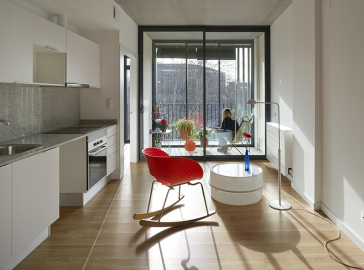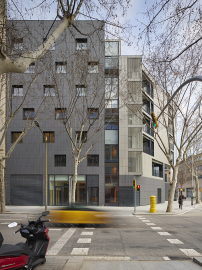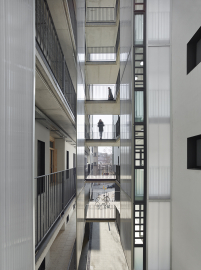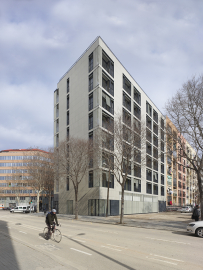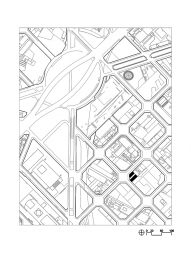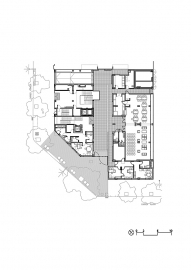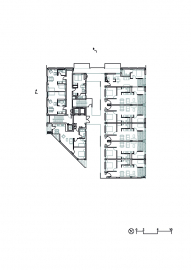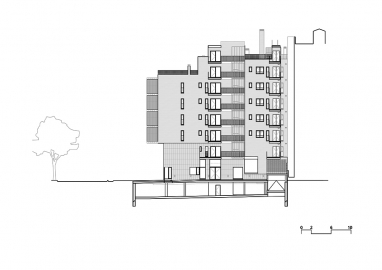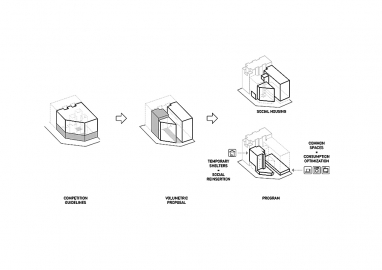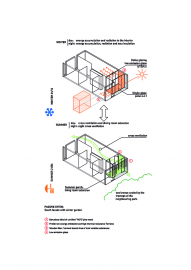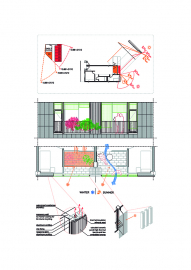mixed dwelling building in 22@
Social dwellings with shelters for the most vulnerable groups, combined together with Urban Responsibility by generating public space with an interior street, Social Responsibility by matching the conditions of the different programs and Environmental Responsibility by implementing passive design strategies such as the winter garden.
For the first time in Barcelona, two usually separate programs are combined into the same building: social housing with temporary shelters for the inclusion of the most vulnerable groups. The design of the overall project responds to 3 basic criteria: Urban Responsibility by generating public space with an interior street that both separates and visually links both programs. Social Responsibility by matching the conditions of the different programs. Environmental Responsibility by implementing passive design strategies such as the winter garden and obtaining an A energy rating label.
The challenge of this project is to include social reinsertion as one more vector of the design process along with sustainability. Inclusion and accessibility of marginalized people starts with its inclusion in the program. For the first time in Barcelona, two usually separate programs are combined in the same building: official rental housing with temporary shelter accommodation for most vulnerable groups. We seek to integrate them not to stigmatize them.
Its location on a former industrial plot in the new central area of Glories, aims at reinforcing its urban presence by accumulating all the public programs on the ground floor. The constructive concept seeks the same level of comfort for all users taking advantage of the natural characteristics of the site: maximizing solar exposure and cross ventilation on a corner plot. Solar gains are reinforced by the incorporation of a winter garden facing south and large loggias facing the western corner. The solar gain of these intermediate spaces has been simulated with Designbuilder and complemented with highly efficient systems such as aerotermia and double flow ventilation thus achieving an A energy rating.
The selection of material is entirely from the Iberian Peninsula, aiming for the most natural, breathable and healthy as possible, including the invisible ones like the insulation. The ventilated enclosure of Faveton extruded ceramic pieces allows for a great comfort with little insulation (8 cm only). The corrugated design minimizes the weight of the piece and considerably reduces the substructure. This vertical undulated surface brings warmth and light to the façade and these same ripples have been reproduced on the mold of the latticework giving a homogeneous quality to all parts of the envelope and dissimulating domestic activities such as drying clothes. The rest of flooring and ceiling materials have a high thermal resistance for a better inertia like exposed concrete and terrazzo whereas mobile materials such as entrance doors and Barcelona blinds in the balconies use a warm and renewable material: Wood.

